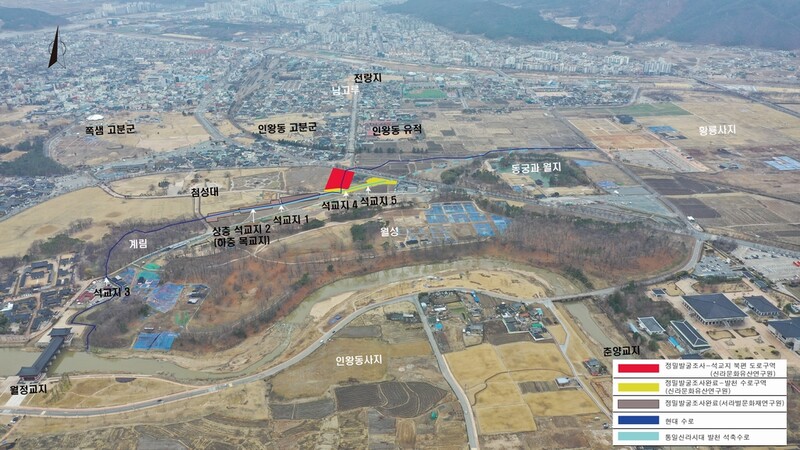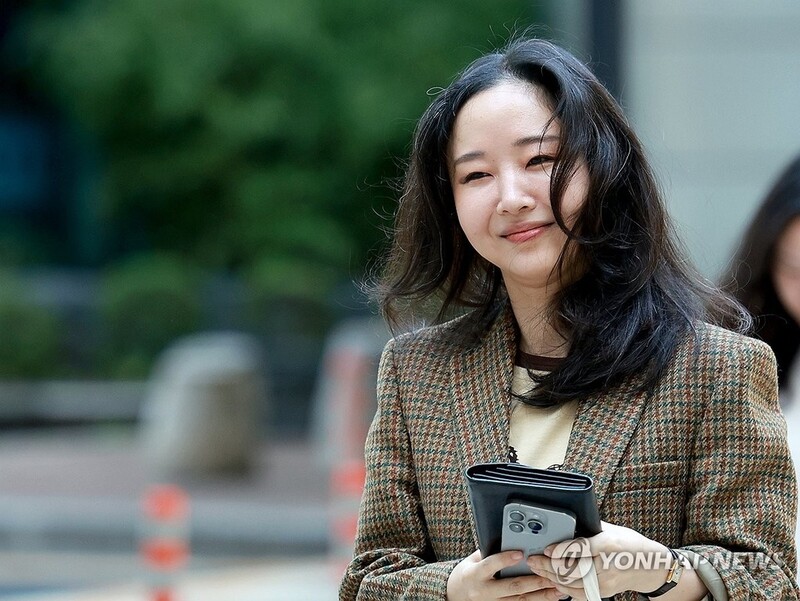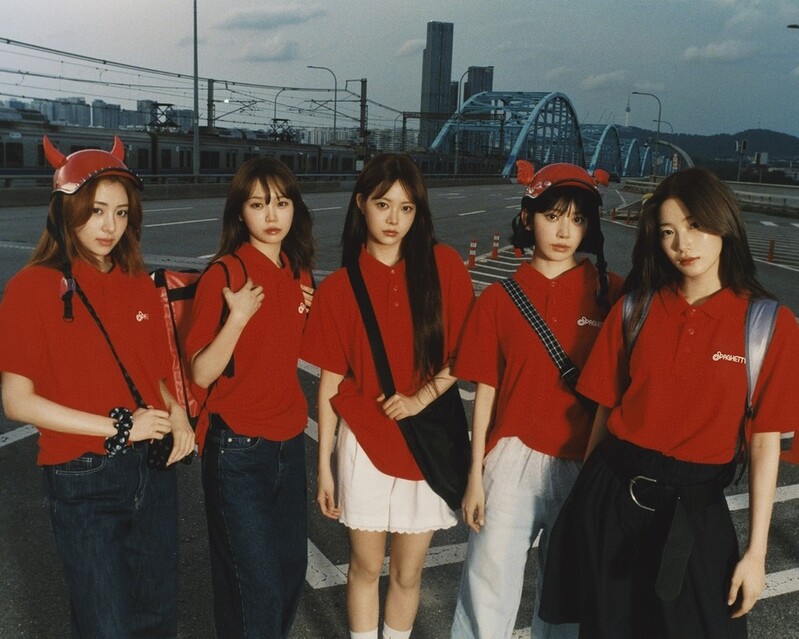 |
| ▲This photo provided by the Cultural Heritage Administration shows the excavation area. (PHOTO NOT FOR SALE) (Yonhap) |
 |
| ▲This photo provided by the Cultural Heritage Administration shows the excavation area. (PHOTO NOT FOR SALE) (Yonhap) |
SEOUL December 21 (Yonhap) -- Balcheon is a stream that passes through Donggung Palace and Wolji Pond, Gyeongju and merges into the Namcheon Stream. Events ParkHyeokgeose’s wife Alyeong experienced at the Balcheon stream is recorded on Samguk Yusa, Memorabilia of the Three Kingdom and passed on throughout history.
According to the written document an oriental dragon appeared in Alyeongjeong Well in Saryang-ri village and gave birth to a girl on its left side. The child's lips resembled a chicken's beak. As people bathed her, her beak popped off. That's why the strean was called Balcheon.
After thorough investigation, the Cultural Heritage Administration of South Korea addressed on Wednesday that they have located the north-south road which starts off from the Stone Bridge remains which predates back to Silla dynasty.
The road leading up to the Wolseong Palace with width of 20 m consists of condensed pebbles.
The north gate is expected to have been connected to the remains of building structure from the Unified Silla dynasty also known as Jeollangji, which to some extent is judged to be the North Palace.
Moreover, on the western end of the road a ditch with width of 80cm with length of 50m was located.
“The remaining found withholds great value in terms of providing evidence to prove the structural layout of the boundaries of the capital of Silla dynasty and how its connected to the palace.” addressed Cultural Heritage Administration.
On the western side of the main road which connected to the stone bridge remains leading off from Wolseong Palace showcase various grand structures, with a well.
On the eastern side of the road is currently used as a gallery instead of any building structures. Based on the current state of the remaining building structures, the structure are assumed to be the remains of government offices.
Continuing on, the Cultural Heritage Administration found pit dwelling filled with short necked jars from 3 to 4th century, and mounted cylindrical bowls underneath the remains of government offices.
(This article is translated from Korean to English by Joonha Yoo)
(END)
(C) Yonhap News Agency. All Rights Reserved














![[방송 소식] MBC 대학가요제 13년 만에 부활…26일 방송](https://korean-vibe.com/news/data/20251024/yna1065624915904676_716_thum.jpg)
![[신간] 레넌과 매카트니는 경쟁자였을까…'존 앤드 폴'](https://korean-vibe.com/news/data/20251024/yna1065624915904305_293.jpg)







